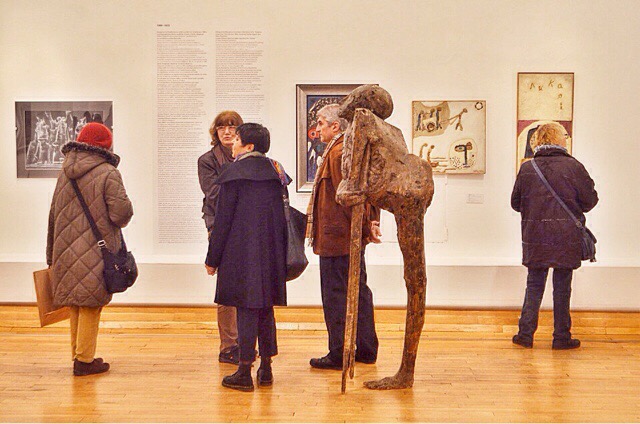

The temporary collection "Forms of Resistance" is dedicated to the artistic opposition against the communist regime in Bulgaria from 1944 to 1985. The exhibition highlights different forms of repression against particular artists at particular moments during the period of state socialism. It also shows the active role of some painters, as well as their forms of resistance against the dogmas of Socialist Realism and against ideological guidance. The upper time limit is the beginning of the perestroika in the Soviet Union, which marks the beginning of the final disintegration of the system of state socialism, also with regard to the political control of arts.
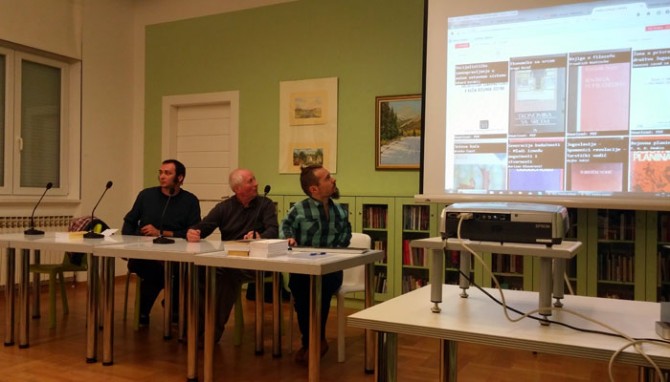

 Event (general): Digitisation of the journal Praxis and the documents of the Korčula Summer School, 2014
Event (general): Digitisation of the journal Praxis and the documents of the Korčula Summer School, 2014
Digitalisation was initiated by two different parties. Ante Lešaja and Nikola Mokrović decided to digitise the collection as part of the activities of the Human Rights Archive operated by the Documenta Center for Dealing with the Past. At the same time, unrelated to the initiative by Lešaja and Mokrović, Tomislav Medak began to digitise all Praxis editions independently. Medak's activity was a part of the project of digitisation of works in Marxology conducted since 2012. He was scanning books at the Cultural Centre MAMA (Multimedia Institute) in Zagreb as a result of a series of left-wing initiatives after the student blockade of the Faculty of Humanities and Social Sciences in Zagreb. After two years of coordinated and enthusiastic work by Nikola Mokrović and Tomislav Medak on digitisation, the digital archive of the collection is now available for the public at the Public Library website (www.memoryoftheworld.org)..The Archival Collection of Praxis and the Korčula Summer School in digital format includes all editions of the journal Praxis, the journal Pogledi, the documentation of the Korcula Summer School, books about Praxis and the Korčula Summer School, writings by members of the editorial staff, periodicals, press articles, photos and movie clips. The physical examples used for digitalisation came primarily from the collection gathered by Ante Lešaja.
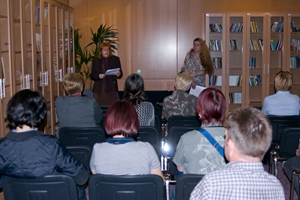
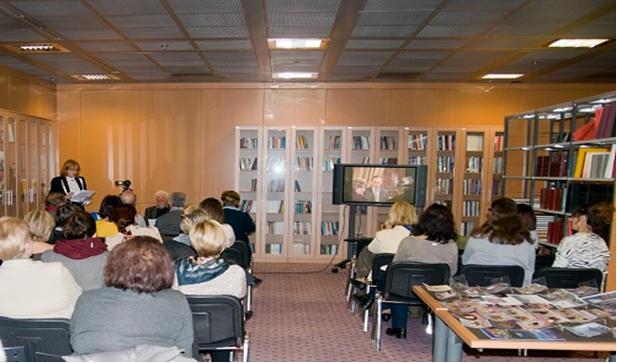

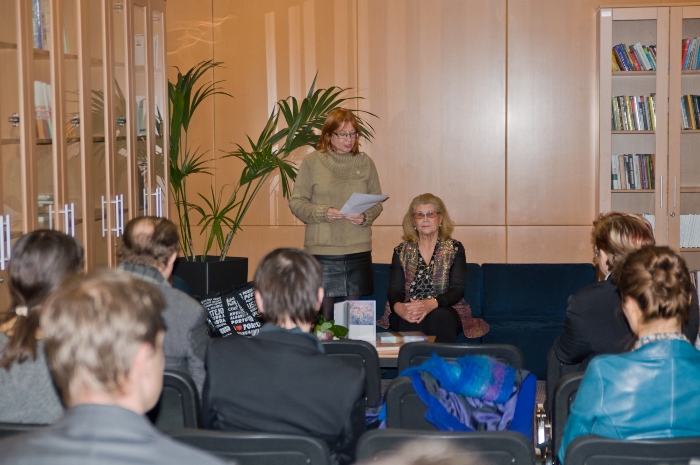


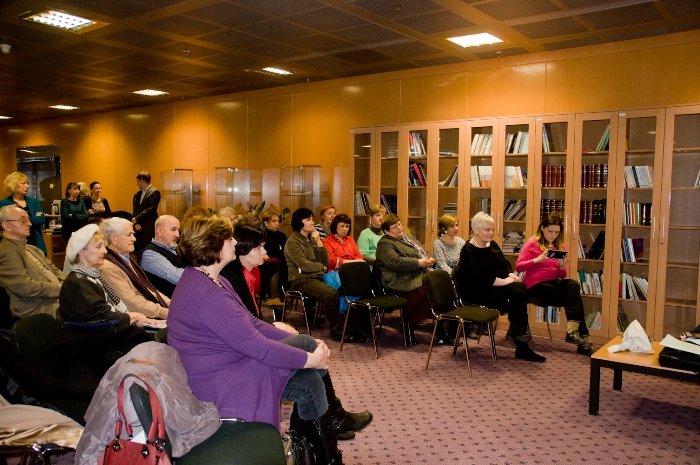
 Event (general): A Series of Public Debates on Topics Relating to the Foreign Croatica Collection, 2014-2017
Event (general): A Series of Public Debates on Topics Relating to the Foreign Croatica Collection, 2014-2017
Since 2014, the Foreign Croatica Collection has organised a series of public debates on the topic of the Foreign Croatica Collection. Željka Lovrenčić was behind this idea, with the initiative coming from the former director of the Library, Dunja Seiter Šverko. These cultural and educational forums host and promote famous Croatians living and working abroad. Debates are moderated by Željka Lovrenčić who is also the creator and organiser. The discussions are held on the first floor of the Library where the Foreign Croatica Collection is located.
Some of the participants of these debates are well-known for their activities in opposing the socialist regime and have held talks on the subject in the debates. Some of these people are Drago Šaravanja, Vesna Kukavica, Marin Sopta, Tomislav Sunić and Tuga Tarle.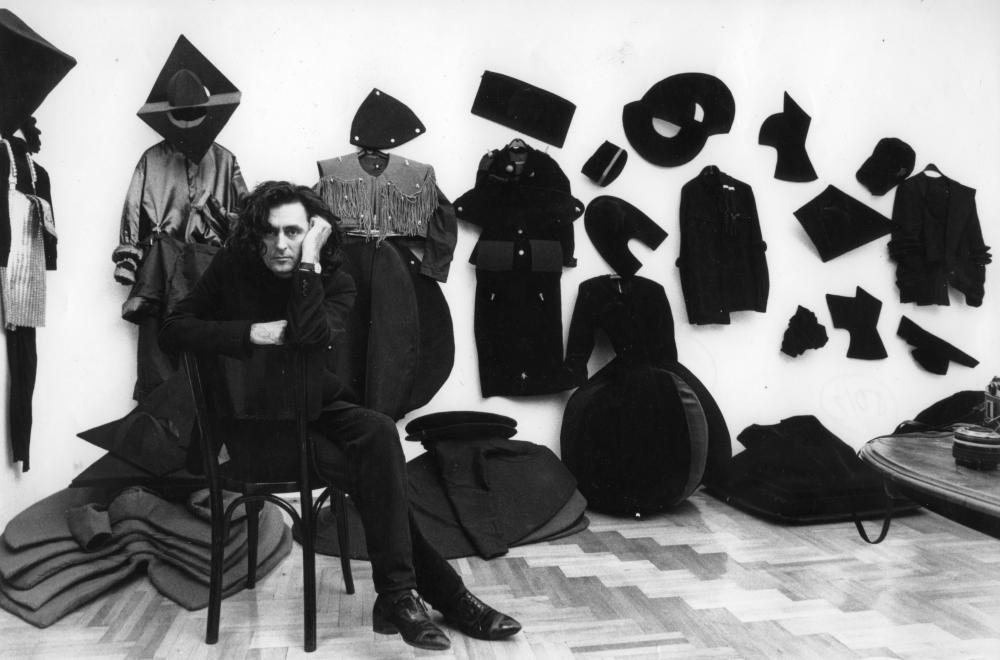

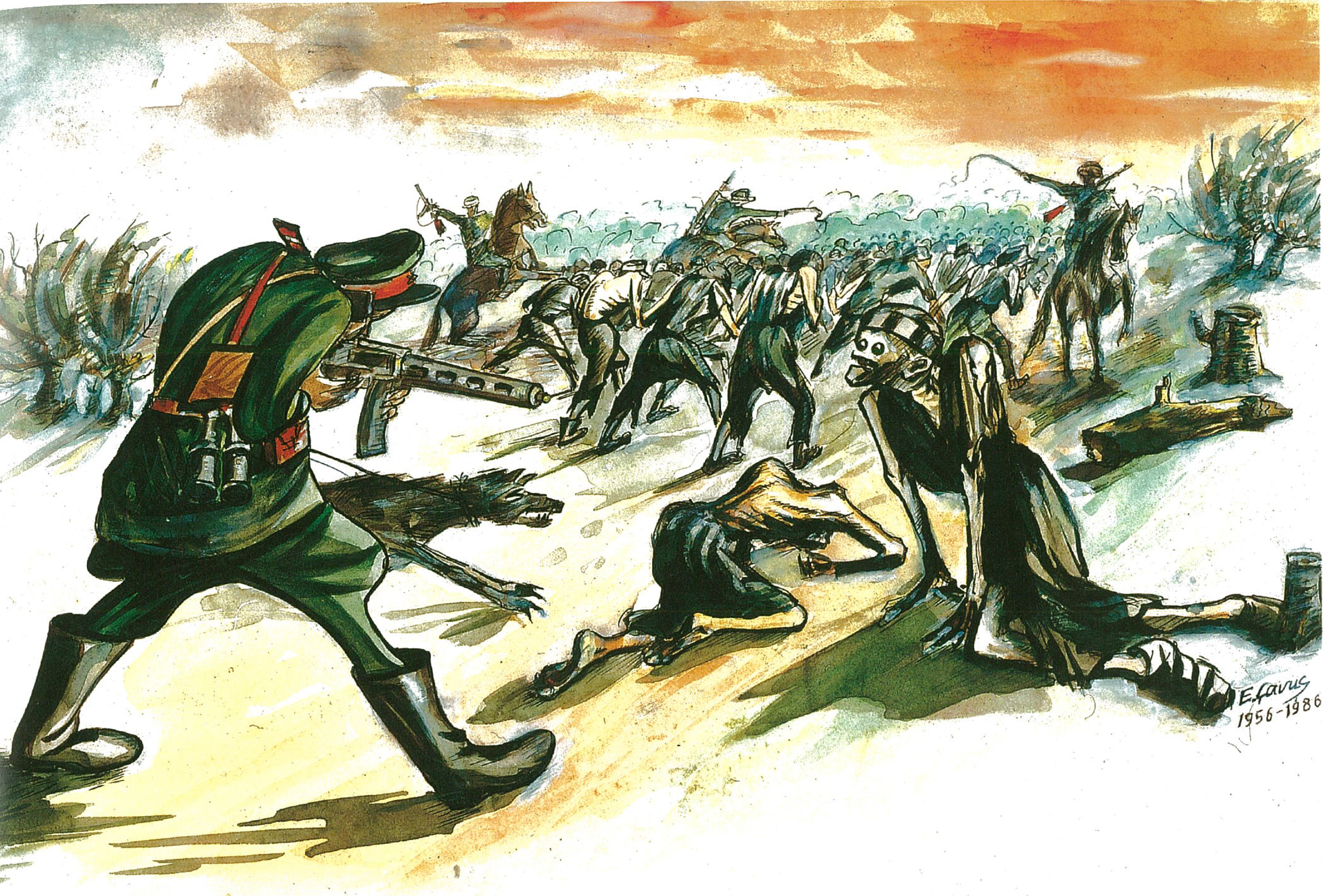

Video interview with Embiya Çavuş, an artist working with ceramics, painter and Bulgarian dissident. Now he lives in Izmir.
Embiya Çavuş was born in 1926 in the village Todor Ikonomovо (former name Mahmuzlii, Turkish Mahmuzlu), Shumen district in Bulgaria. He and five of his friends established the secret “Organisation of Defending Turkish Existence and Personality”. Accused of creating a secret Turkish organization and espionage in favor of Turkey, Çavuş was sentenced to life imprisonment and spent sixteen years, from 1947 to 1961, in different prisons and in the forced labor camp in Belene (1949–1956). However, in 1961 he was conditionally released. In 1964, after an amnesty law was passed, Çavuş was granted amnesty. In 1965 Çavuş began to work as a porcelain expert in a porcelain factory in the small town of Novi Pazar, Bulgaria. As a porcelain artist, he visited Poland in 1974 and the USSR in the years of 1976, 1977. In 1978, in the framework of an emigration agreement between Bulgaria and Turkey, Embiya Çavuş moved to Turkey and settled in Izmir.
Embiya Çavuş has double citizenship, Bulgarian and Turkish.
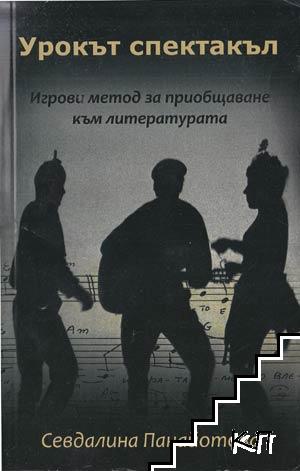

The book "The Performance Lesson: Game Method of Inclusion in Literature" was published shortly before Sevdalina Panayotova's death on 27 September 2014. Sevdalina Panayotova was the founder of the "Spectacular Lesson" method for teaching literature through theater.The book contains a description of the "lesson-spectacle" method developed by Sevdalina Panayotova, and six scripts for dramas adapted from Bulgarian and classic word literature. Sevdalina Panayotova's reading of the literary works is unconventional: she enriched the scenes with descriptions of the time period, she used forbidden literature (works of symbolists, for example), and she directed attention to forgotten or forbidden stories about authors such as the proletarian poets Hristo Smirnenski and Nikola Vaptsarov. Through her works, she taught critical thinking, and civic responsibility.She began writing theatrical scenes in 1960s and they developed over the years. Each class performed The Little Prince by Antoine de Saint-Exupéry; About the Letters, based on texts of medieval Bulgarian literature; Vaptsarov - Eternal and Contemporary and The Mansard of Dreams from verses by symbolists, and other works. Her productions enjoyed great success among her students. The performances of these scenes were innovative, highly artistic, acknowledged by lecturers at the Krastyo Sarafov Higher Institute for Theater Arts (now known as the National Academy of Theater and Film Arts) and directors, and commissions which reviewed amateur theater. Nevertheless, her works also drew the suspicion of the state authorities.
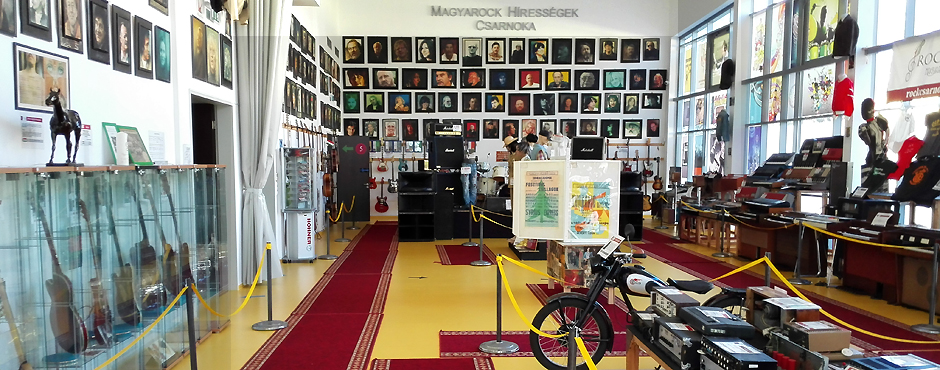

The Rock Museum was established in 2014 as a grassroots initiative by former musicians, experts, and collectors. The museum is the first collection in Hungary that presents documents and items of importance to the Hungarian rock and popular music scene (with an international and primarily regional focus) from the late 1950s to the present. Generally, the phenomenon of rock music under state socialism is considered a form of cultural resistance.
Andrej Aplenc’s testimony of captivity on the island of Goli was held in front of a young audience in Ljubljana on August 27, 2014. Aplenc was detained twice on Goli. The first time, he went to Goli otok in 1949 for a year, and the second time was in 1952 for two years. The reason for his first imprisonment was his criticism of the lack of freedom of speech in Yugoslavia, as he advocated greater freedom of expression for young people. The second time he was imprisoned for refusing to cooperate with the state security service, which tried to recruit him as an informer.
The event was organized by the Study Centre for National Reconciliation and is listed in their Archive of Testimonies as one of the testimonies about the post-war rigidity of the communist system that also impacted young people, resulting in disillusionment with this system and Aplenc's emigration. The testimony is publicly available by prior arrangement but has not yet been used.
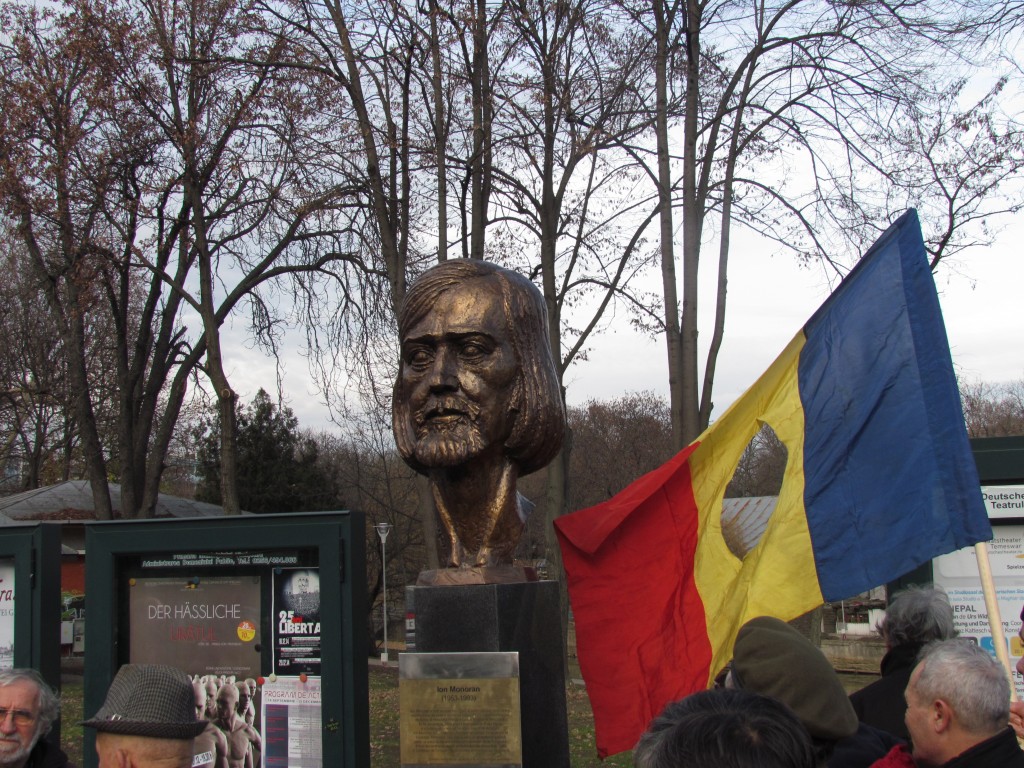

A bust of the revolutionary hero and rebellious poet Ion Monoran was unveiled on 16 December 2014, exactly twenty-five years from the start of the Revolution of December 1989 in Timişoara. A quarter of a century earlier, Ion Monoran had cried: “Down with communism!” close to the home of Pastor László Tőkés, where a crowd had gathered to prevent the pastor’s forced removal from Timişoara. The same day, Ion Monoran took the initiative of stopping the first trams in Timişoara’s Maria Sqare, a moment that would later be considered particularly significant for the catalysing of popular discontent and implicitly for the later course of the events of December 1989 in Timişoara and later in Bucharest.
The bust, the work of the sculptor Aurel Gheorghe Ardeleanu, is situated near the Flora restaurant, very close to Maria Square and to the place where, on 16 December 1989, Ion Monoran stopped the trams. Ana Monoran, the poet’s widow, said in the documentation interview that she highly appreciated Aurel Gheorghe Ardeleanu’s sculpture, and that it is a place where she often goes to recover her peace of mind. The cost of the work was 13,000 lei (approximately 2,700 euro), and was supported entirely by the local authorities of the city of Timişoara. The material in which it is cast is bronze.
In addition to this bronze bust, there is also a street in Timişoara that bears the name of Ion Monoran, and the reading room of the Revolution Memorial in Timişoara also bears his name. There is a commemorative plaque on the facade of the house where Ion Monoran lived, and he is, post-mortem, an Honoured Citizen of the city of Timişoara.
The private collection contains materials documenting the celebration of the Grand Jubilee, when 100,000 pilgrims gathered in Solin in Dalmatia on 12 September 1976. The Grand Jubilee celebrated the thirteen centuries of the first contacts of the Croats with the Holy See and 1,000 years of the construction of the first known Croatian Marian shrine. By commemorating the Croatian Catholic medieval rulers and statehood, the Church articulated a collective identity rooted in the past and tradition. As such, it was inherently opposed to the socialist imagery offered by the Yugoslav state. Some Communist Party members saw in the massive mobilisation of believers the “escalation of nationalism” as a follow-up to the Croatian Spring.
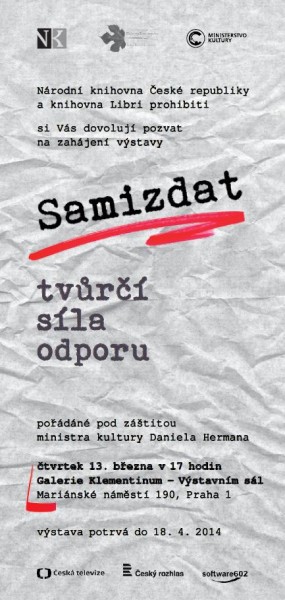

The exhibition “Samizdat the Creative Power of Resistance” was prepared by the library Libri Prohibiti in cooperation with the National Library of the Czech Republic in the spring of 2014. The exhibition held in the Klementinum Gallery in Prague presented samizdat as a social phenomenon within the context of the 1970s and 1980s. Among the exhibits, the most important editions and authors of Czech samizdat literature could be found. Visitors could also learn about various ways of the production and reproduction of samizdat, and about the persecution of samizdat publishers and distributors.
As government violence increased against pro-Europe activists involved in the Maidan protests of 2013-2014, demonstrators began building barricades for defense. The Ukrainian Museum-Archives has in its permanent collection a park bench from Kyiv, which was used as part of EuroMaidan barricade. Harlan Crow, an eccentric real estate developer from Texas, purchased the bench in 2015 through channels that remain unknown and brought the item back to Dallas. Crow has particular interest in pro-democracy movements worldwide and has a vast personal collection of toppled statues of authoritarian figures and other memorabilia from former communist countries. He is also a staunch Republican and supports campaigns like those of Senator Rob Portman, who is big supporter of the UMA. Portman suggested that Crow donate the bench to the Ukrainian Museum-Archives, an institution that collects and preserves artifacts that are important for Ukrainian history. Portman is co-chair of the Senate caucus on Ukraine and feels that it is important to support Ukraine’s sovereignty and democratic development. Therefore, he and members of his staff are frequent visitors to the UMA and have also traveled to Ukraine to observe firsthand what is happening there.
This piece in the UMA’s collection demonstrates that its mission also aims to engage the present historical moment, which involves grappling with Ukraine’s difficult past and complex relationship to communism. The Euromaidan caused a fissure in Ukraine, further polarizing conversations about history, memory and the crimes of communism. Moreover, this featured item also further underscores the importance of the Ukrainian community’s relationship to Ohio’s Congressional leadership, who through crucial interventions and ongoing engagement continue to support the UMA’s mission to preserve and disseminate Ukraine’s archival heritage.
The largest presentation of Koszits’s collection so far was held in the Gallery of Pécs, a prominent gallery in the city, located in the main square, as part of the all arts action days of 8–11 May 2014, a festival entitled “Pécs Underground 1980.”
At the festival, an exhibition of documents from the 1980s (documents from Koszits’s collections and some others) was presented to the public. It included photos, works of the fine arts and the applied arts, and archival films and videos. This set of events also offered a chance to commemorate once legendary, now deceased figures of the Pécs underground / alternative art life, including musician, ceramist, and “culture-tobacconist” Attila Kálóczy, singer, actor, and director Péter Hardy, esthete, and performer Sándor Kiss (“Sanya”), and arist Tamás Enyingi (“Tonyó”). Portrait of these artists were presented, along with some of their works.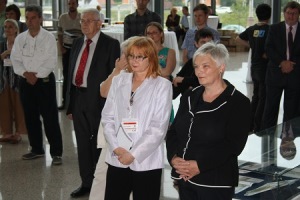
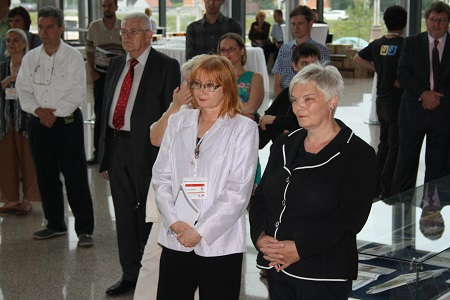


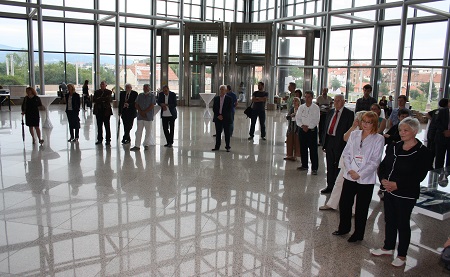
The exhibition titled "Serial Publications by Croats Living Outside Croatia (from NUL fund)" (Serijske publikacije Hrvata izvan Hrvatske: iz fonda NSK) was held in Zagreb at the National and University Library. It took place from 24 June to 3 July 2014. The aim of the exhibition was to hold the First Croatian Diaspora Congress. The editor of the exhibition catalogue and the exhibition organiser was Željka Lovrenčić, head of the Foreign Croatica Collection. The exhibition included serials published abroad during the time of socialist Yugoslavia and depicted anti-communist and opposition activities.
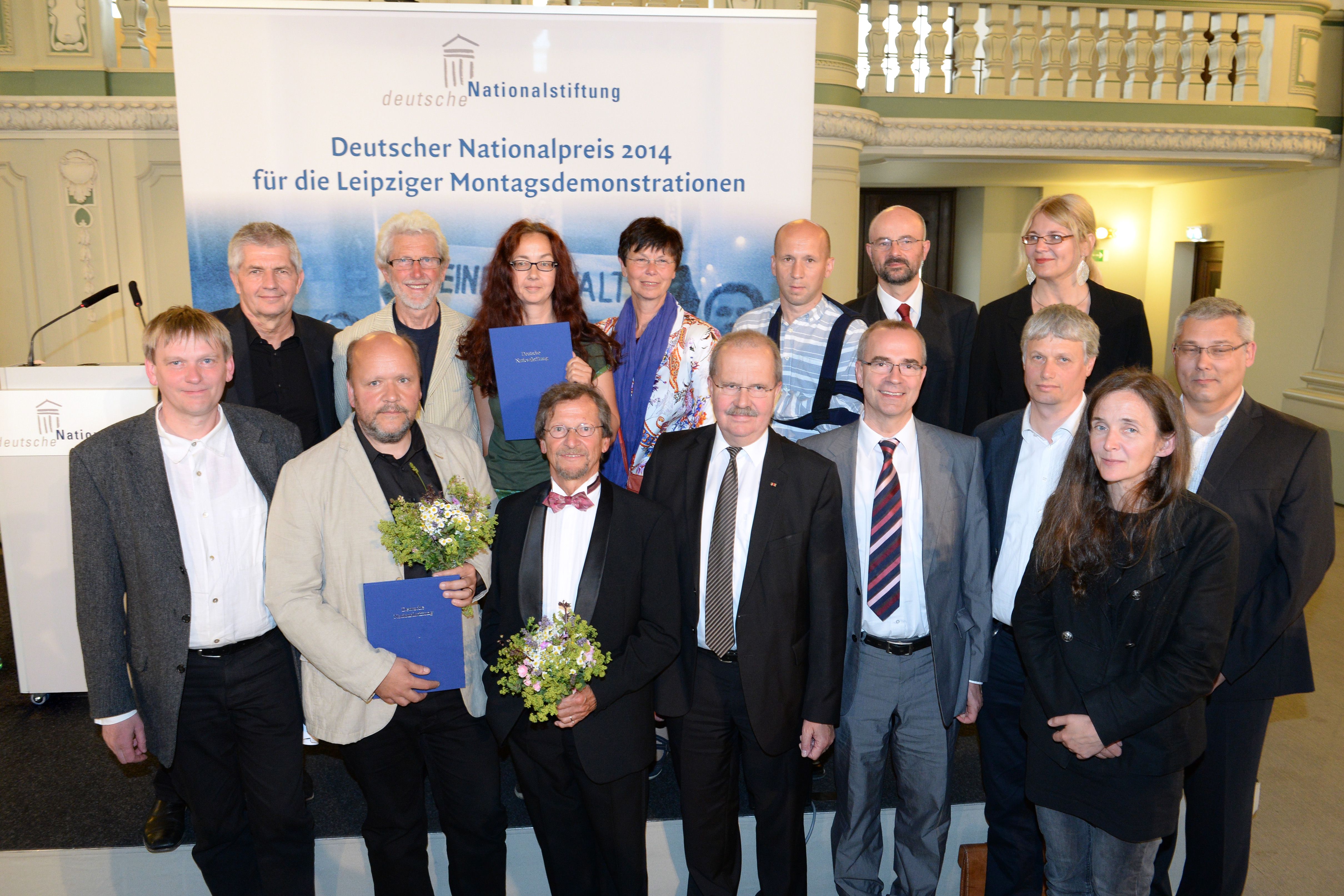

The German National Foundation has awarded a national prize since 1997. In 2014, the foundation awarded the prize collectively to representatives of the Monday Demonstrations in Leipzig – the Reverends Christian Führer and Christoph Wonneberger, the civic rights activist Uwe Schwabe, as well as the Civic Movement Archive in Leipzig (ABL). Since its foundation, the archive has preserved written, visual and audio records of events leading up to and during the autumn of 'system change.' The prize money of 30,000 Euros was put towards the acquisition of new technical devices.
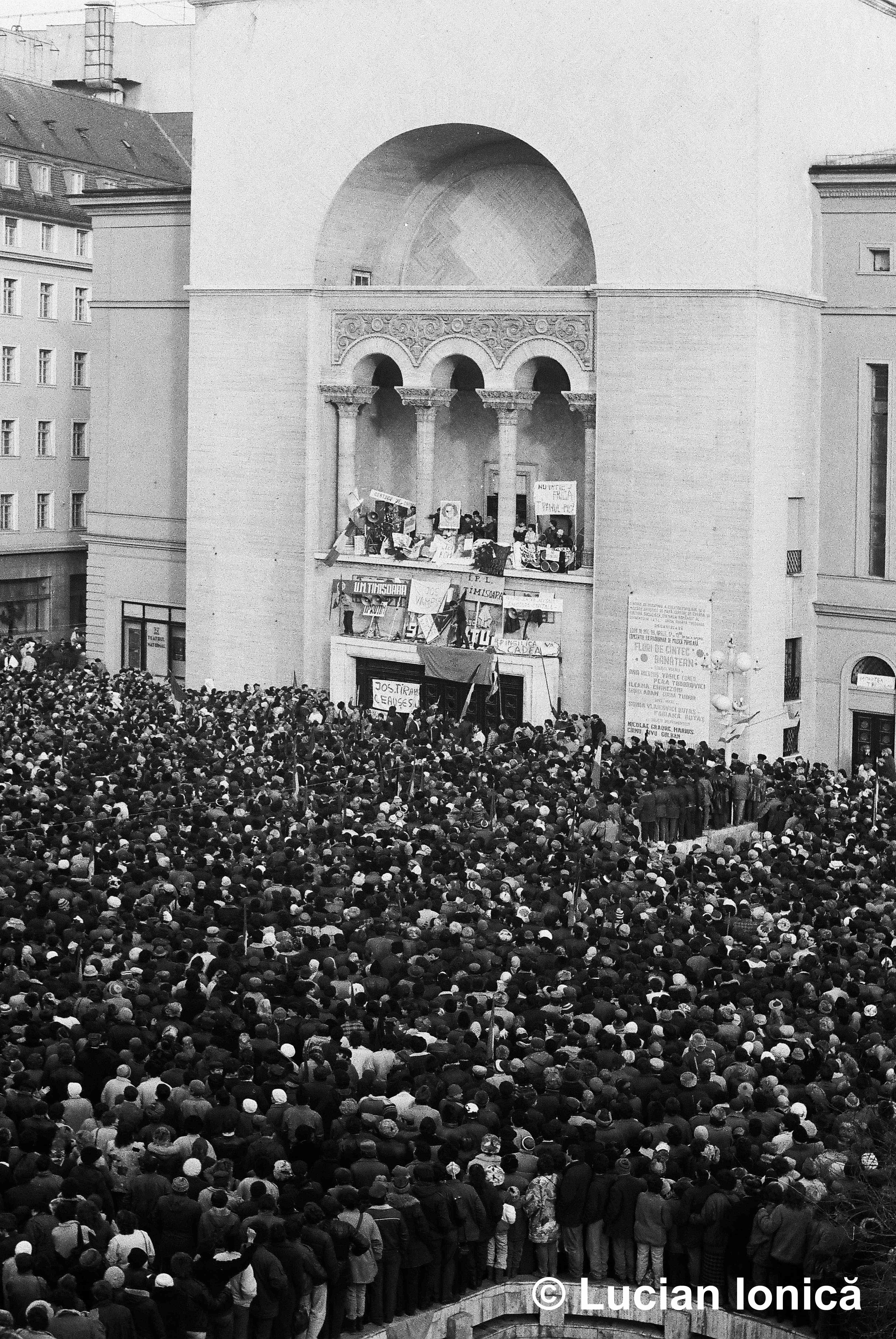

Approximately a third of the photographs that make up the Lucian Ionică private collection have, for a number of years, also had a public status. Some thirty-two images were presented for the first time in the Calpe Gallery, in Timişoara, in an exhibition entitled “Liberated from fear – December ’89,” which was opened on 16 December 2014. The exhibition remained open until the middle of January 2015, and was visited by several hundred people. The exhibition was then moved to the Memorial to the Revolution of 16–22 December 1989 in Timişoara, to a room specially prepared for these photographs. It remained on view there for a year, after which the images were rearranged in another room, where they can be seen at present.
Croatian writer Ivan Aralica described the case of his own "purge" from the League of Communists of Croatia in Zadar in the spring 1972, when he was suspended from the Party due to accusations of not preventing the spread of nationalism and chauvinism in Zadar in the period 1970-71. In the book Smrad trulih lešina (The stench of rotten corpses, 2014), Aralica quotes the minutes of the inquiry panel which interrogated him and calls this process "differentiation" (Aralica 2014, 125).
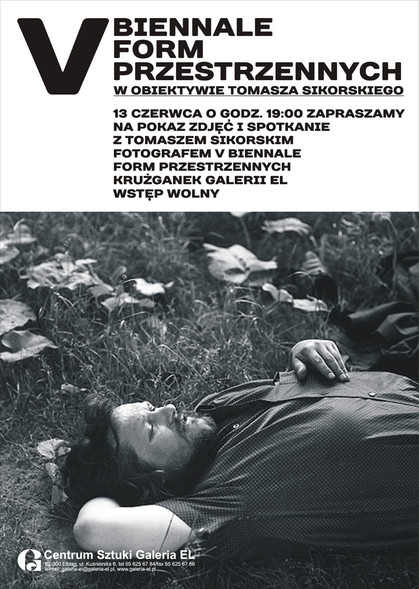

On June 13, 2014, there happened as so far the only presentation of the photographs by Tomasz Sikorski documenting the preparations for and occurrences of the Fith Biennial of Spatial Forms Cinema Laboratory. The show V Biennale Form Przestrzennych w obiektywie Tomasza Sikorskiego was organized by the EL Gallery in Elbląg – the same entity that decades ago had organized the historic biennial. The part of the event was a meeting with the artist.Besides the show, the photos made by Tomasz Sikorski during the Fith Biennial were presented only once in the book Gerard. Z materiałów i refleksji o działalności artysty i człowieka written by Ryszard Tomczyk and published by EL Gallery Art Center, 2017. There were displayed 4 photos by Sikorski on the pages of the book.
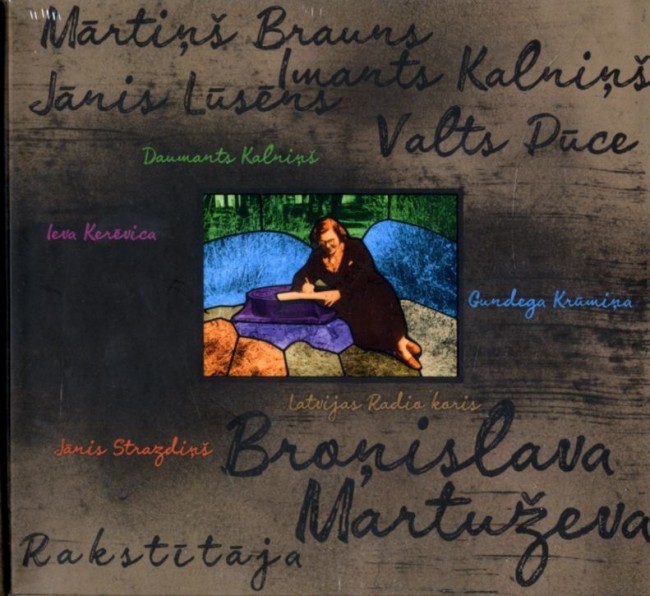

In 2014, the conductor and producer Sigvards Kļava created the musical performance Rakstītāja (The Writer), from choral songs written by several contemporary Latvian composers, based on poems by Broņislava Martuževa. The performance was put on in Lubāna, Rēzekne and Rīga. Material from the Broņislava Martuževa collection in the Museum of Literature and Music was used in the production.
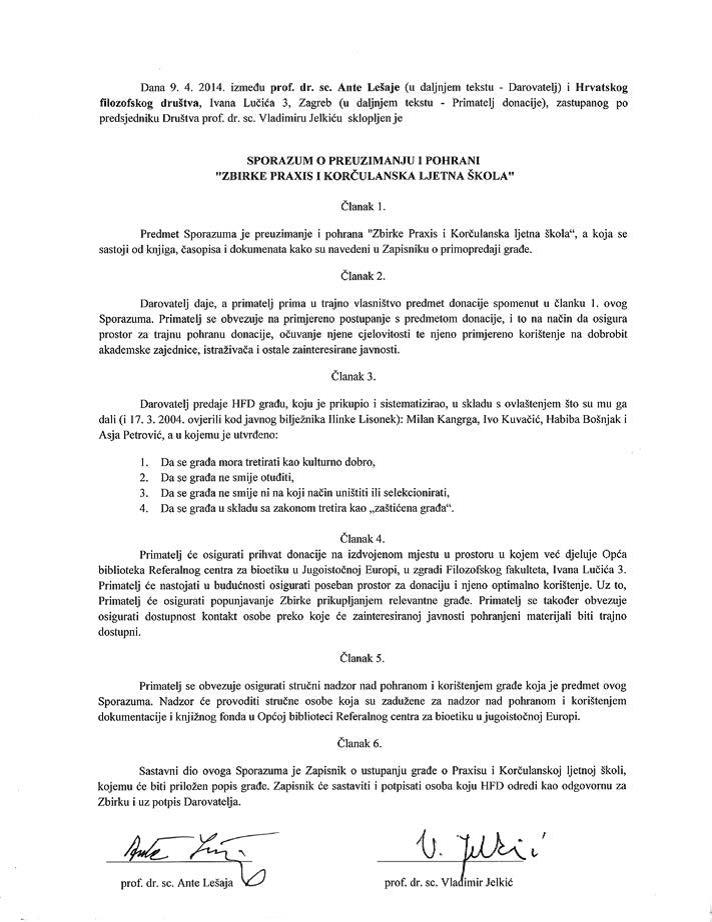
![Lešaja, Ante. 2014. Praksis orijentacija, časopis Praxis i Korčulanska ljetna škola [građa] (Praksis Orientation, Journal Praxis and The Korčula Summer School [collection]). Beograd: Rosa Luxemburg Stiftung.](/courage/file/n32082/sporazum.jpg)
 Donation of the Praxis and Korčula Summer School Collection to the Croatian Philosophical Society, 2014
Donation of the Praxis and Korčula Summer School Collection to the Croatian Philosophical Society, 2014
After Ante Lešaja gathered the Praxis and Korčula Summer School Collection, he donated it to the Croatian Philosophical Society (CPS) on April 9, 2014. This action was suggested by Prof. Lino Veljak. The donation was made under the condition that the collection should be treated as cultural heritage, that it cannot be alienated, destroyed or selectively preserved. The CPS has undertaken the commitment to properly store and make the materials available to scholars and the general public. These conditions were included in the Agreement on Deposition and Preservation of the Praxis and Korčula Summer School Collection and they are legally binding for institutions that have taken up custodianship of the collection and signed the agreement. Tomislav Krznar was authorized for further work on the collection.
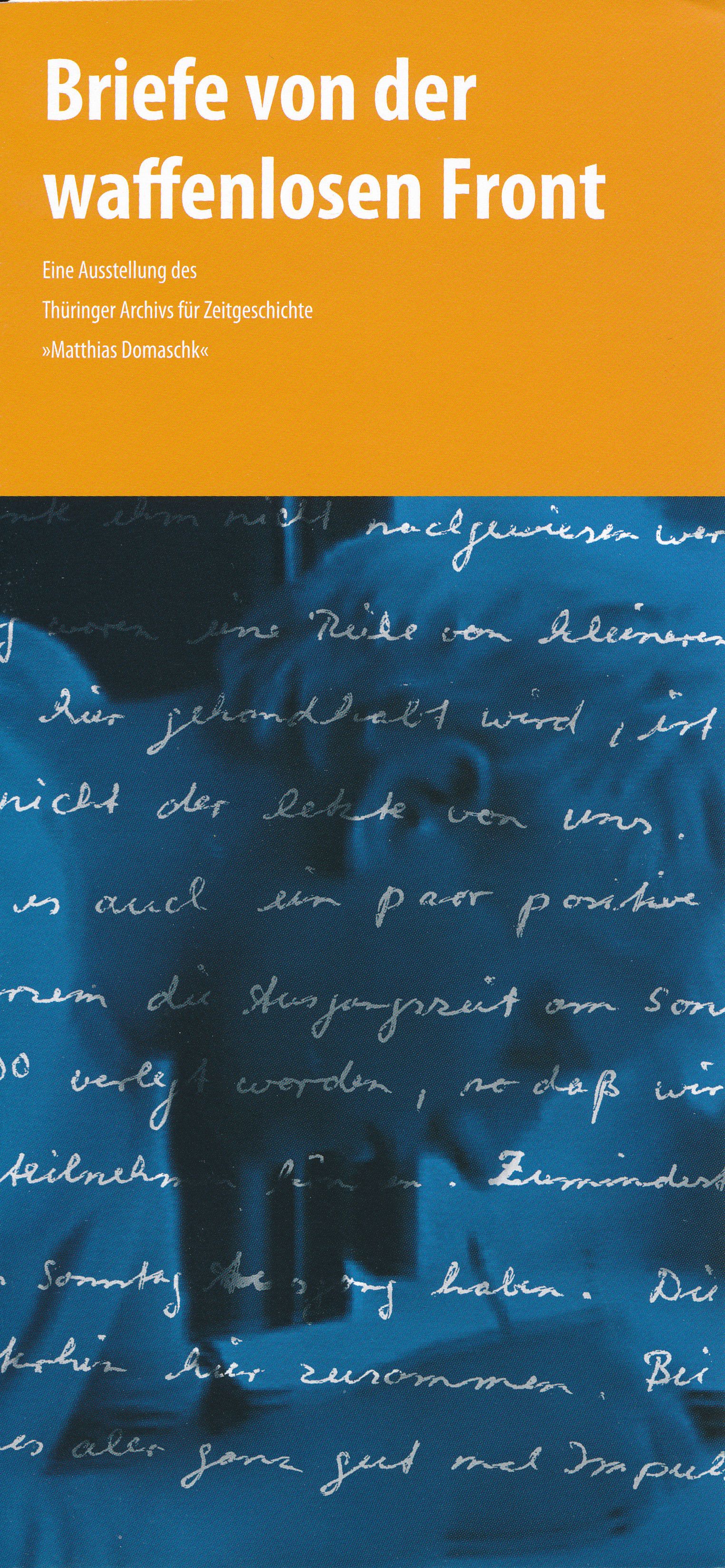

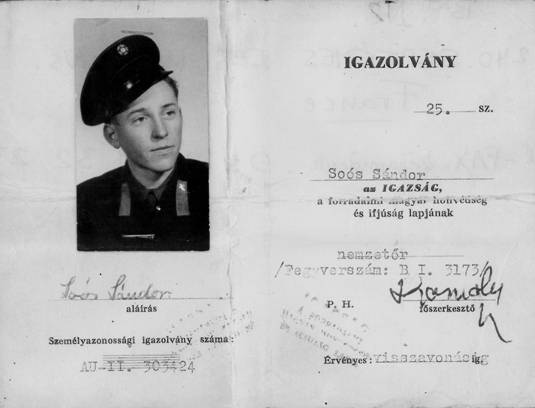

The distinctly unique group identity of the Hungarian veterans’ circle in Provence is visible in the fact that their members took an active part in both of the hottest armed conflicts of the Cold War: as teenage insurrectionists in 1956 Hungary, and a few years later as volunteers of the French Foreign Legion in the final phase of the devastating Algerian war. Due to much more powerful counter-forces, finally they lost both their fights; however, as the lucky survivors, they managed to win the peace. Thus today they are among the few witnesses who have been given the chance to recall those troubling events that took many of their generational fellows, who died young or disappeared worldwide some 60 years ago.
A conservative estimate of these youngest recruits of the Legion, a few of them still underage at that time, is 500 among well over of 3,000 Hungarian volunteers total, who, following 1956 served in Algeria under the French tricolor and the red-green banners of the Legion. As a result of five years of archival and oral history research both in Hungary and France, more than the half of them, 269 members of the younger age group, have been identified by name and personal data. Finally, some two dozen Hungarian veterans were found in Provence and Corsica, and nine of them volunteered to share their memories with the wider public as the main characters of a feature length documentary film and a 500-page documentary book. (See Béla Nóvé’s film and book of the same title and subject, Patria nostra, published in late 2016.)
Even the first interviews and questionnaires of the veterans proved with shocking evidence how deeply and decisively their 1956 experience was etched in their memories. For various personal, biographical reasons, in the autumn of 1956 they all joined the protest demonstrations and the revolutionary unrest with great enthusiasm. Now nearing the age of 80, they still remember this time as their “baptism by fire.” The then thirteen-year-old János Spátay volunteered as a courier, passing secret messages sewed in a football from the isolated revolutionary troops across the bridges of Budapest that were blocked by Russian tanks. Fourteen-year-old Béla Huber from Sopron was the first to throw a hand grenade at the local headquarters of the ÁVH (the communist secret police); he continued to hide out in the woods along the Western border with other teenage boys for a month after the adult insurgents had all fled to Austria. Sixteen-year-old Gyula Sorbán took up arms on the first night at the siege of the Radio headquarters and for days was busy producing Molotov cocktails until he was gravely injured in the leg by a Russian tank grenade. Sándor Soós, a 17-year-old apprentice miner in Oroszlány protected the entrance of the New York Palace, a hotel and press center in downtown Budapest, with a light machine gun and only fled to the West with the last groups of insurgents one week after the second Soviet invasion.
He was the one, who, at the request of the researcher, described his 1956 memories in a twenty-page manuscript (the brief selection here is an excerpt), and then discussed his fighting experiences in detail on camera when visiting Budapest with László Eörsi, an expert of freedom fighter groups of 1956. His testimony was all the more appreciated by the historian Eörsi, since there are hardly any archival records left behind by the group that defended the New York Palace in Budapest.![Publication: Lešaja, Ante. Praksis Orientation, Journal Praxis and The Korčula Summer School [collection], 2014. Book](/courage/file/n25269/knjiga.jpg)
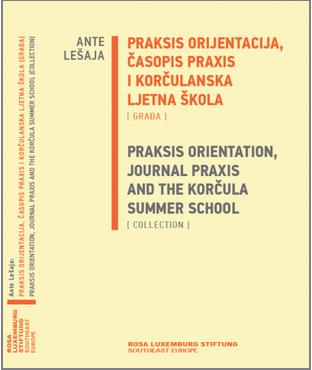
 Publication: Lešaja, Ante. Praksis Orientation, Journal Praxis and The Korčula Summer School [collection], 2014. Book
Publication: Lešaja, Ante. Praksis Orientation, Journal Praxis and The Korčula Summer School [collection], 2014. Book
A publication on the Archival Collection of Praxis and the Korčula Summer School was released at the end of 2014 (bi-lingual, in Croatian and English) written by Ante Lešaja, Praksis orijentacija, časopis Praxis i Korčulanska ljetna škola (građa)/Praksis orientation, journal Praxis and the Korčula Summer School (collection), publisher: Rosa Luxemburg Stiftung-Southeast Europe, Belgrade, 2014. Along with an introductory essay on the classification of the collection, the book contains a detailed list of all items in the collection, as well as an extended bibliography of the Praxis orientation. The book is aimed at providing facts and is thus of particular benefit to researchers.


The exhibition entitled Enough - We Won't be Silent Anymore showed rich visual and textual material about the first oppositional mass demonstrations in Blagoevgrad in 1989, the declaration on the return of Muslim names, mass meetings and the democratic changes in local government, among which was the first democratically election for major in Blagoevgrad and others. The exhibition presents images of civic participation in the transition years 1989-1991 and numerous documents of organizations that were among the main factors of social change at the beginning of the transition. A special place was devoted to the importance of Neofit Rilski South-West University (then known as the Higher Pedagogical Institute) in these events, such as the establishment of the Independent Student Society.The exhibition was based both on archival materials (such as documentation of political parties from 1989-1991) and on life histories and personal archives collected by the Balkan Society for Autobiography and Social Communication. All original materials were later handed over to the Archives State Agency-Blagoevgrad; the association stores only scanned copies in its own archive.
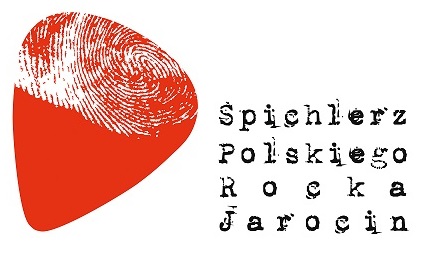

Polish Rock Granary in Jarocin, a branch of the Regional Museum, possesses a unique collection of photographs, documents, and films related to the history of Polish rock music, dated from 1959 until today. The most interesting exhibits are presented at a permanent exhibition, available also on-line. The history of Polish rock is not only the evolution of the genre and styles, bands, albums, concerts, and festivals; it is also the dissent against the dominant culture and the search for an alternative. The location of Polish Rock Granary is by no means coincidental. In the 1980s the small town of Jarocin hosted the Rock Musicians’ Festival that attracted rock music fans and alternative culture participants from all over Poland, and even from Czechoslovakia and GDR.
